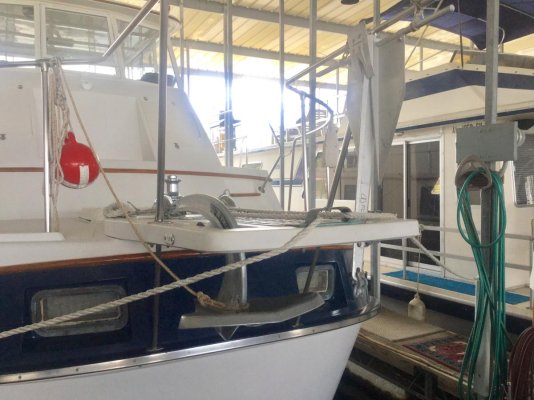If fluke area was the only determine factor the Boss would win hands down but fluke area is only one part of the equation which makes rating anchors a very difficult practice.
Agreed. During the Chesapeake Bay soft mud testing there was a very high expectation that because of its massive surface area, the 45 lb Manson Boss would be a top performer, but during several pull tests just it slid along the bottom without spiking the tension.
Why? I was educated by our consultant, Bob Taylor, who worked with the US Navy and offshore industry for 50 years (he has also worked with Peter Bruce and Vryhof) that it is the
effective fluke angle which will determine whether an anchor will immediately engage and penetrate into a sea bottom.
If you look at the Manson Boss, it is flat across the bottom and so at least in soft mud, this design does not aggressively point and orient the fluke into a steep downward position.
Additionally, there are sea bottoms where the Fortress and its two massive flukes is going to be challenged, specifically in grass, weeds, or rocks where those flukes might only get a minimal bite, even though they are very sharp.
I think in those cases, you might be better served by an anchor with a narrow single fluke, and with some serious weight behind it.
If you have used a Fortress as a primary and you anchor in sand, mud or clay,
AND you have not been satisfied with it, then I suspect it was undersized for the boat and possibly the bottom & wind conditions.
Of course, there is also the possibility of operator error, and I have certainly heard my share of those stories during the past 20 years from boaters who because of their limited knowledge & skill, they have had some very unrealistic expectations about their anchor's performance.


